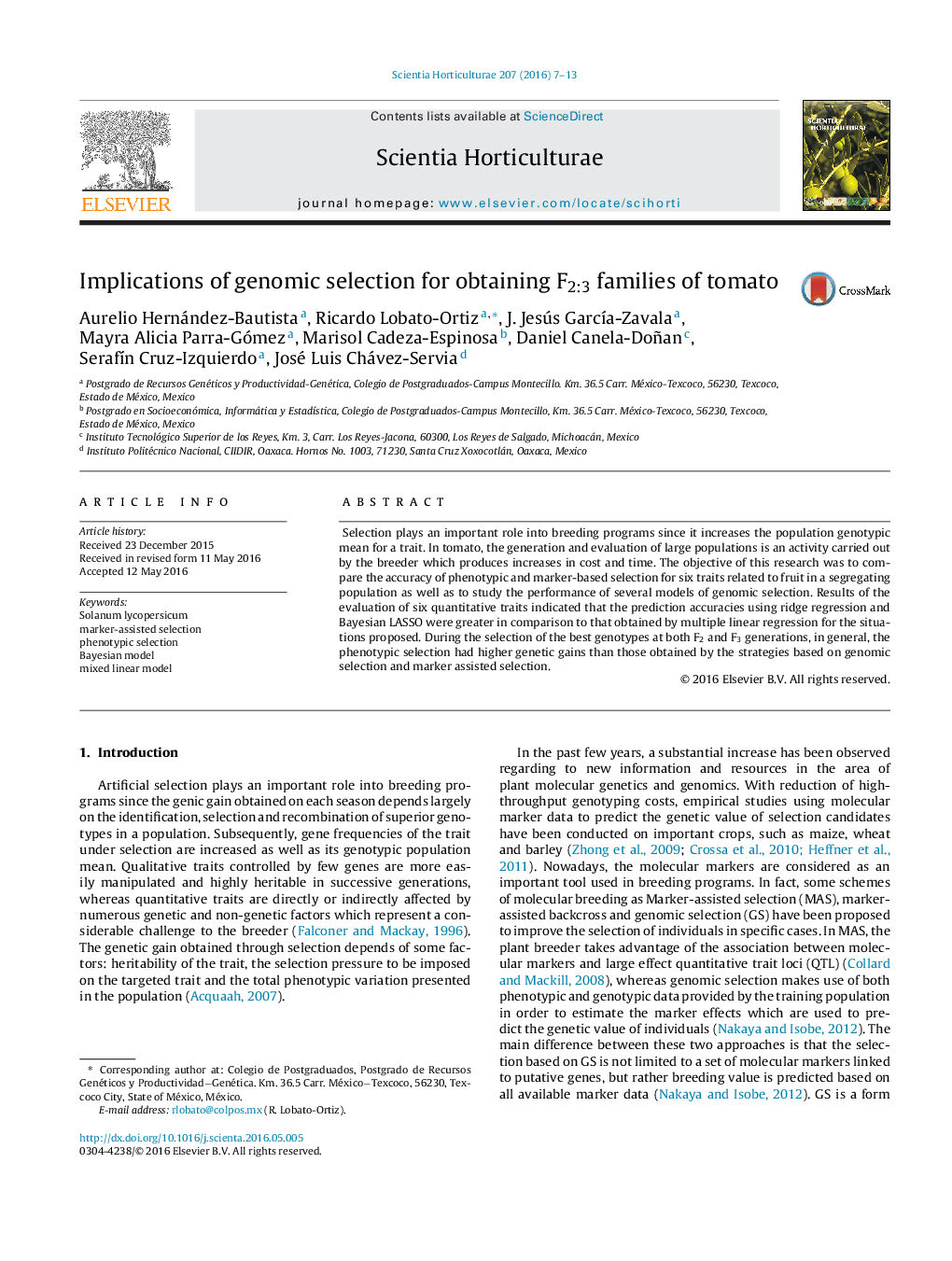| Article ID | Journal | Published Year | Pages | File Type |
|---|---|---|---|---|
| 6406191 | Scientia Horticulturae | 2016 | 7 Pages |
Abstract
Selection plays an important role into breeding programs since it increases the population genotypic mean for a trait. In tomato, the generation and evaluation of large populations is an activity carried out by the breeder which produces increases in cost and time. The objective of this research was to compare the accuracy of phenotypic and marker-based selection for six traits related to fruit in a segregating population as well as to study the performance of several models of genomic selection. Results of the evaluation of six quantitative traits indicated that the prediction accuracies using ridge regression and Bayesian LASSO were greater in comparison to that obtained by multiple linear regression for the situations proposed. During the selection of the best genotypes at both F2 and F3 generations, in general, the phenotypic selection had higher genetic gains than those obtained by the strategies based on genomic selection and marker assisted selection.
Keywords
Related Topics
Life Sciences
Agricultural and Biological Sciences
Horticulture
Authors
Aurelio Hernández-Bautista, Ricardo Lobato-Ortiz, J. Jesús GarcÃa-Zavala, Mayra Alicia Parra-Gómez, Marisol Cadeza-Espinosa, Daniel Canela-Doñan, SerafÃn Cruz-Izquierdo, José Luis Chávez-Servia,
